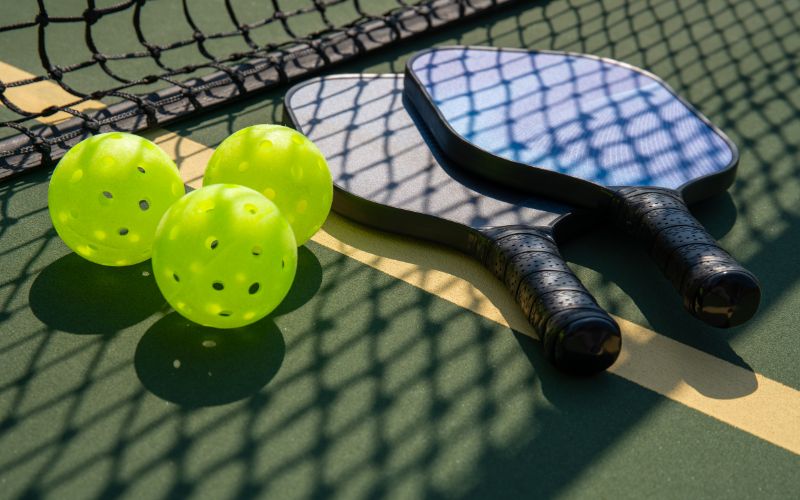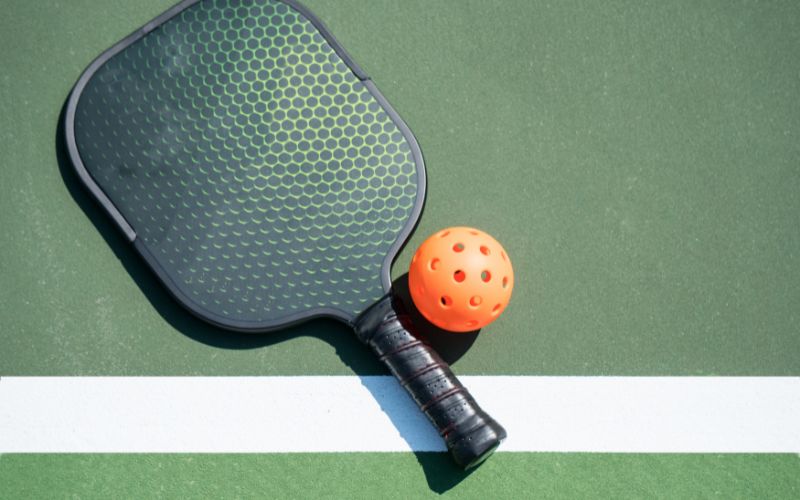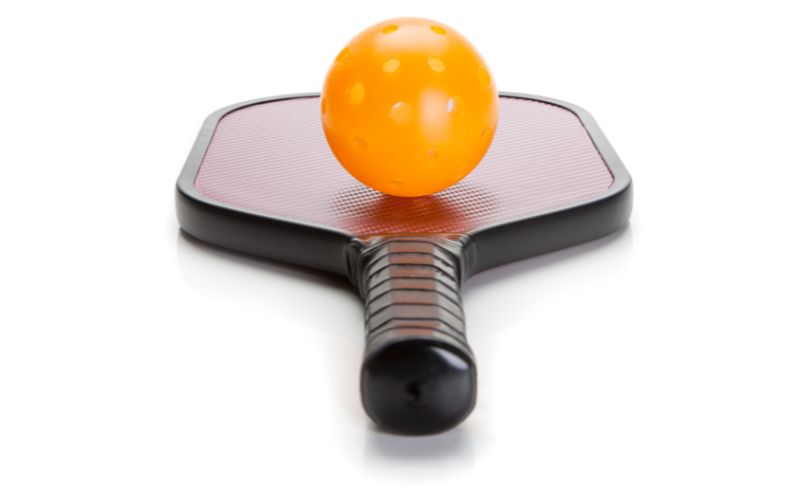Pickleball, a dynamic and rapidly growing sport, demands the right equipment for players to maximize their performance. Central to this is the pickleball paddle, a critical tool that significantly influences a player’s style, power, and control. Choosing the right paddle involves considering various factors, from weight and core material to grip size and shape. In this comprehensive guide, we’ll explore the key aspects of selecting the ideal pickleball paddle to suit your game.
Factors to Consider When Choosing a Pickleball Paddle
1. Paddle Weight: Finding the Right Balance
Selecting the appropriate paddle weight is crucial for optimizing your playing experience. The weight of a pickleball paddle affects your ability to control shots, generate power, and prevent fatigue during extended play.
Lighter Paddle Options
- Lighter paddles are generally easier to maneuver, making them suitable for players who prioritize quick reflexes and agility.
- A light paddle is beneficial for players with a finesse-oriented playing style, emphasizing control over power.
Heavier Paddle Options
- Heavier paddles tend to deliver more power in shots, making them preferred by players who rely on powerful drives and smashes.
- Consider a slightly heavier paddle if you have a more aggressive style of play and prioritize putting more force behind your shots.
2. Paddle Core: Understanding the Inner Composition
The paddle core is a critical component that influences the paddle’s performance. Two primary core materials, polymer and composite, offer distinct characteristics.
Polymer Core Paddles
- Polymer core paddles are known for their softer feel, providing enhanced control and a quieter impact.
- They are an excellent choice for players seeking precision and finesse in their shots.
Composite Core Paddles
- Composite core paddles, often incorporating materials like carbon fiber or aluminum, offer a balance of power and control.
- These paddles suit players who aim to combine both power elements and shot accuracy.
3. Paddle Length: Short or Extended Reach
The paddle length directly impacts your reach and the area of the court you can cover. Choosing between a standard and an elongated paddle depends on your playing preferences.
Standard Paddle Length
- Standard-length paddles are common and offer a balanced feel, suitable for various playing styles.
- Ideal for players who prioritize control and maneuverability over an extended reach.
Elongated Paddle Length
- Elongated paddles provide a longer reach, allowing players to cover more ground.
- Suited for players who want an extended reach for shots near the baseline or are comfortable with the slightly different balance.
4. Paddle Shape: Defining Your Play Style
The paddle shape plays a significant role in determining your playing style, affecting both power and control aspects of the game.
Traditional Paddle Shapes
- Traditional paddle shapes are generally rectangular with a wider face, providing a larger sweet spot.
- Suited for players who prioritize a forgiving paddle face, offering ample surface area for shots.
Specialty Pickleball Paddles Shapes
- Specialty shapes, such as teardrop or oval, focus on a specific aspect of play, like enhanced power or control.
- Choosing a specialty shape depends on your preferred style of play and the specific strengths you want to emphasize.
5. Grip Size: Finding the Right Fit for Your Hand
Paddle grip size is a crucial factor in preventing discomfort and ensuring a secure hold on the paddle. Grip sizes vary, and selecting the correct size contributes to better shot execution.
- A grip that’s too small can result in the paddle twisting in your hand, affecting control.
- Conversely, a grip that’s too large may lead to difficulties in maneuvering the paddle quickly.
6. Paddle Face Material: Balancing Durability and Feel
The paddle face material influences the paddle’s durability, feel, and responsiveness to the ball.
- Graphite Paddles: Offer a lightweight feel and excellent responsiveness, suitable for players who prioritize a softer touch.
- Composite Paddles: Provide a balance between durability and feel, catering to players seeking a versatile paddle.
Making the Right Pickleball Paddle Choice
Choosing the right pickleball paddle involves a combination of personal preferences, playing style, and understanding the impact of various features on your game. Here are some tips to guide your decision:
1. Identify Your Playing Style
- Assess whether you prioritize power, control, or a balanced approach.
- Consider your strengths and weaknesses on the court.
2. Understand Your Skill Level
- Novice players might benefit from paddles that emphasize forgiveness and control.
- Advanced players may seek paddles that complement their specific playing style.
3. Consider Your Physical Condition
- Players with physical limitations or injuries may lean towards lighter paddles to reduce strain.
- Evaluate your physical condition to determine the most comfortable paddle weights.
4. Experiment with Paddle Types
- Don’t hesitate to try different types of paddles to gauge their feel and performance.
- Many players find their preferred paddle through experimentation and testing.
5. Seek Expert Advice
- Consult with experienced players or pickleball professionals for paddle recommendations.
- Attend local pickleball events or clinics to gain insights into different paddle options.
6. Review Product Specifications
- Pay attention to paddle specifications, including weight, core material, and grip size.
- Ensure that the paddle you choose aligns with your preferences and requirements.
Conclusion
Selecting the right pickleball paddle is a personalized journey that involves understanding your playing style, preferences, and the impact of paddle features on your performance. Whether you opt for a lightweight paddle for finesse or a heavier one for power, finding the right pickleball paddle enhances your overall playing experience. Consider the factors discussed in this guide, experiment with different options, and enjoy the game with a paddle that complements your unique style on the pickleball court.
FAQs: How Do I Know What Pickleball Paddle to Use?
Can I Choose a Paddle Based on My Playing Style?
Absolutely! Identifying your playing style is crucial. If you prefer finesse and control, opt for a lighter paddle. For a more aggressive style emphasizing power, consider a slightly heavier paddle.
How Does Paddle Core Material Affect Performance?
The core material significantly influences the feel of the paddle. Polymer core paddles offer a softer touch, ideal for precision, while composite core paddles balance power and control for versatile play.
What’s the Difference Between Standard and Elongated Paddle Lengths?
Standard paddles provide a balanced feel and are suitable for various playing styles. Elongated paddles offer a longer reach, beneficial for players wanting extended coverage, especially near the baseline.
How Does Paddle Shape Impact My Game?
Paddle shapes play a role in power and control. Traditional shapes provide a larger sweet spot, enhancing forgiveness. Specialty shapes, like teardrop or oval, focus on specific playing aspects, such as power or control.
Why is Grip Size Important, and How Do I Choose?
Grip size prevents discomfort and ensures a secure hold. Choose a grip size that prevents twisting (not too small) and allows quick maneuvering (not too large). Finding the right fit contributes to better shot execution.
Does Paddle Face Material Matter?
Absolutely! The face material impacts durability, feel, and responsiveness. Graphite paddles offer a lighter feel and responsiveness, while composite paddles provide a balance between durability and feel for versatile play.






